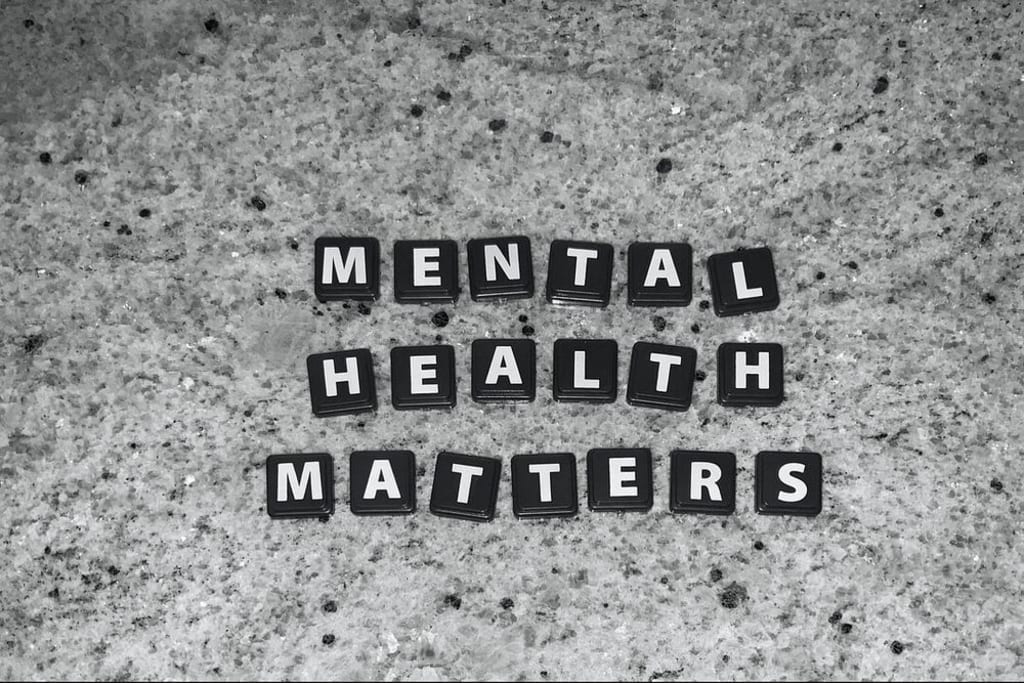Relationship between mental health and the workplace
If not then this article will guide you on why it is necessary to take care of the mental health of your employees and how it is correlated with their performance at work.

Do you know the relationship between mental health and the workplace?
Mental health and the workplace have an intimate relationship. The workplace is a significant contributor to the psychological well-being of individuals, and conversely, poor mental health can significantly impact an individual's productivity and success in the workplace. Mental health refers to the emotional, psychological, and social well-being of an individual, whereas the workplace is the environment or setting where an individual conducts their professional activities.
Therefore, the workplace has a significant impact on the mental health of individuals, and conversely, the mental health of individuals affects their performance and success in the workplace. This article explores the relationship between mental health and the workplace, including the factors that contribute to poor mental health in the workplace, the impact of poor mental health on the workplace and the individual, and strategies that can be implemented to improve mental health in the workplace.
👉Factors Contributing to Poor Mental Health in the Workplace
The workplace is a complex environment that involves numerous factors that can contribute to poor mental health. Some of the factors that contribute to poor mental health in the workplace include:
Workload: A heavy workload can be a significant contributor to poor mental health in the workplace. When individuals are required to work long hours and are constantly under pressure to meet deadlines, it can lead to stress, burnout, and anxiety.
Poor management: Poor management can lead to poor mental health in the workplace. When managers are unsupportive, uncommunicative, and insensitive to the needs of their employees, it can lead to low morale, job dissatisfaction, and high turnover rates.
Workplace bullying: Workplace bullying can have a significant impact on the mental health of individuals. When individuals are subjected to bullying, it can lead to anxiety, depression, and low self-esteem.
Lack of support: When individuals do not receive adequate support from their colleagues or employers, it can lead to feelings of isolation and loneliness, which can have a negative impact on their mental health.
Poor working conditions: Poor working conditions, such as inadequate lighting, high noise levels, and poor ventilation, can contribute to poor mental health in the workplace.
👉Impact of Workplace Factors on Mental Health
The workplace environment can have a significant impact on an employee's mental health. Workplace factors such as workload, job demands, interpersonal relationships, job insecurity, and work-life balance can affect an employee's mental well-being.
Workload and job demands: High job demands and workload have been found to be associated with increased stress and anxiety levels, which can lead to burnout and other mental health problems (Schaufeli et al., 2009). Employees who feel overwhelmed with their workload may experience a lack of control over their work, leading to feelings of stress and anxiety.
Interpersonal relationships: Interpersonal relationships at work also play a crucial role in an employee's mental health. A toxic work environment characterized by bullying and harassment can have a severe impact on an employee's mental well-being. Workplace bullying has been linked to increased levels of stress, depression, and anxiety (Kivimäki et al., 2000). Conversely, supportive relationships with colleagues can lead to increased job satisfaction and improved mental well-being.
Job insecurity: Job insecurity and fear of losing one's job can lead to chronic stress, which is associated with various mental health problems (Burgard et al., 2009). Employees who feel uncertain about their job security may experience feelings of anxiety and stress, which can negatively impact their mental health.
Work-life balance: A lack of work-life balance and long working hours have been linked to increased levels of depression and anxiety (Sabbath et al., 2012). Employees who feel unable to balance their work and personal lives may experience feelings of stress, leading to burnout and other mental health problems.
👉Effect of Mental Health on Work Performance
Mental health problems can have a significant impact on an employee's work performance. Employees with mental health problems may experience reduced productivity, increased absenteeism, and higher rates of turnover (Kessler et al., 2008).
Depression: Depression has been found to be associated with reduced work performance, increased absenteeism, and higher rates of disability (Lerner et al., 2007). Employees with depression may experience difficulty concentrating, making decisions, and completing tasks, leading to reduced productivity.
Anxiety: Anxiety has been linked to increased levels of presenteeism, where employees come to work but are unable to perform their tasks effectively (Hilton et al., 2008). Employees with anxiety may experience feelings of worry and fear, leading to decreased job satisfaction and reduced productivity.
👉Strategies to Improve Mental Health in the Workplace
Promote Work-Life Balance: Employers can encourage work-life balance by offering flexible work schedules, providing paid time off, and creating a supportive work culture that emphasizes the importance of taking care of one's mental health.
Create a Supportive Work Environment: Employers can create a supportive work environment by providing mental health resources such as Employee Assistance Programs (EAPs), mental health support groups, and access to mental health professionals.
Implement Stress-Management Programs: Employers can implement stress-management programs that include training on stress-reduction techniques and mindfulness practices.
Encourage Open Communication: Employers can encourage open communication by creating a culture where employees feel comfortable sharing their concerns and feedback without fear of retaliation.
Address Workplace Bullying and Harassment: Employers can address workplace bullying and harassment by implementing policies and procedures that clearly define what constitutes bullying and harassment and provide employees with a clear reporting process.
Address Job Insecurity: Employers can address job insecurity by providing clear job descriptions, job security, and a supportive work culture that values employee contributions.
Provide Mental Health Education: Employers can provide mental health education to employees through workshops, training sessions, and informational materials to increase awareness of mental health issues and reduce stigma.
Conclusion
Mental health is a vital aspect of overall well-being, and the workplace can significantly impact an employee's mental health. Employers have a responsibility to create a supportive work environment that prioritizes employee well-being by promoting work-life balance, implementing stress-management programs, encouraging open communication, addressing workplace bullying and harassment, addressing job insecurity, and providing mental health education.
By implementing these strategies, employers can improve employee mental health, which can lead to increased productivity, reduced absenteeism, and higher job satisfaction. Ultimately, creating a supportive work environment that prioritizes mental health benefits both employees and employers by promoting a healthy and productive workplace culture.
About the Creator
MrKarthikKN
Founded in 2020 by MrkarthikKN has come a long way from its beginnings in Global. When MrkarthikKN first started out, Blog passion for - Electronic Products and Info" drove them to job,






Comments
There are no comments for this story
Be the first to respond and start the conversation.